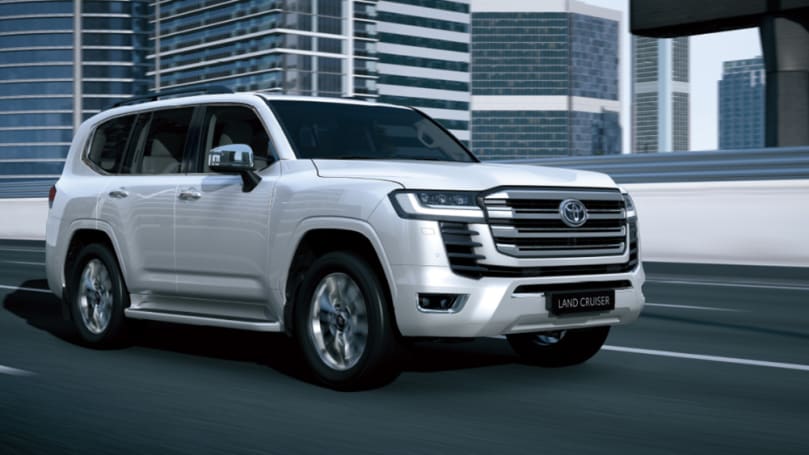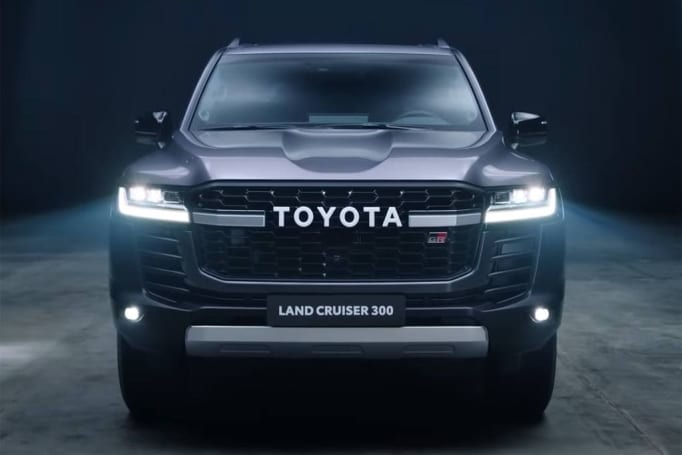
Luxury electric SUV gets its first facelift: 2025 Genesis GV60 scores minor design and tech upgrades to better compete with BMW iX1 and larger Porsche Macan electric
Hyundai’s luxury sub-brand Genesis has updated its dedicated electric...
Browse over 9,000 car reviews

News that the new Toyota LandCruiser 300 Series will feature a large aluminium content for its exterior panels has raised a few eyebrows.
For the record, the LC300 (as Toyota refers to it) will have the majority of its exterior hanging panels formed from aluminium.
The new car will have a roof, bonnet, doors and front guards all pressed in aluminium, while the rear three-quarter panels will remain steel, as will the vehicle’s basic ladder-chassis structure.
The first questions from would-be owners of the new Cruiser usually revolve around accessories and repair costs.
Starting with the latter, a major independent panel beating workshop in Victoria told CarsGuide that any car with aluminium panels imposes certain requirements when it comes to repairing crash damage.
The biggest caveat is that major or structural damage needs to be repaired by a workshop certified by the car’s manufacturer.
Compared with a conventional steel car, there’s not the same scope for pulling an aluminium structure straight after a shunt; ideally, the damaged section needs to be cut away and a new section either welded or bonded in to replace the damaged part.
Given the tolerances and exotic materials involved, this is simply beyond the scope of the vast majority of panel shops and it’s why manufacturers have developed their own network of repairers approved to carry out this sort of work.
That said, the new LandCrusier sticks with its steel frame, so those concerns aren’t high on every buyer’s mind.
But even more minor repairs to an aluminium vehicle impose their own conditions.
A minor bump or scrape may be able to be repaired in a fairly traditional method, but if the panel has been stretched in the course of the crash (not uncommon for either aluminium or steel body panels), then the aluminium panel cannot be heat-shrunk as a steel panel can.
At that point, a replacement part is the best solution and the price of the repair suddenly heads skyward.
The truth is that a lot of traditional panel shops won’t touch a car with aluminium panels (including the one we spoke with), making their repair a very specialised process, which is often reflected in insurance premiums for such makes and models.
On that basis, owners might find that their insurance premiums take a hike compared with previous LandCruisers.

We contacted RACV Insurance, which told us that while many factors contribute to the cost of a final premium, it did confirm that, it may take into account “the make and model (including the materials the car was made with)”.
This will come down to individual insurers and policy-holders, but it’s worth keeping in mind.
As far as accessories go, the shift to aluminium external panels shouldn’t make any difference.
The steel; structure is still where electrical gear will be earthed, and attachment points for winches, two-bars, wheel carriers and bull-bars will remain good old fashioned steel.
The advantages of the aluminium panels, meanwhile, are most closely associated with weight saving.
The new LandCruiser is claimed to be anything from 100 to 200kg lighter than the old car on a model-for-model basis, and much of that reduction must surely be down to the aluminium panels.
This tactic is by no means a Toyota first; since 2015, Ford in the US has been selling its popular F-150 pick-up with an aluminium body and tray draped over a high-strength steel frame. The company claimed a weight reduction of more than 300kg in the process.
Combined with the diesel engine option, the aluminium-clad F-150 became the first full-sized US pick-up to beat the magic 30 milers per gallon target (about 8.5 litres per 100km based on a US gallon).
Clearly, improved fuel economy is the big benefit of that reduced kerb mass, and one that will hopefully translate to the LC300 in real-world conditions.

Rust resistance will also be a by-product of the move to aluminium panels, as that material, unlike steel, doesn’t rust.
But aluminium will oxidise. And the process happens quickly, because aluminium has a great affinity for oxygen, which kicks off the corrosion process.
The good news is that once all the surface of a piece of aluminium has bonded (reacted) with whatever oxygen it’s exposed to, it forms a hard surface layer and then the process stops.
It can still require repairs to a painted finish, but a corrosion-perforated panel is much less likely.
However, it’s also important to remember that the new LandCruiser’s structure is, indeed, made from steel, so a trip along a beach at low tide will still require careful cleaning afterwards.
There’s also one other major reason not to fear this new materials technology: an aluminium body over a steel chassis has been a successful off-roader construction method since the late 1940s.
Designed straight after World War 2, British engineers resorted to aluminium body panels for the Land Rover, based on a shortage of steel at the time (most of which had been fired at or dropped from planes in the general direction of Germany).
But the British military aircraft industry was flush with aluminium, leading to the decision to specify the Land Rover with its aluminium panels.
The Range Rover followed suit in 1969 with the same, successful construction technique, and the die was cast.
Comments